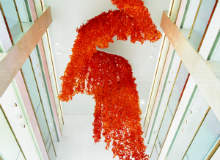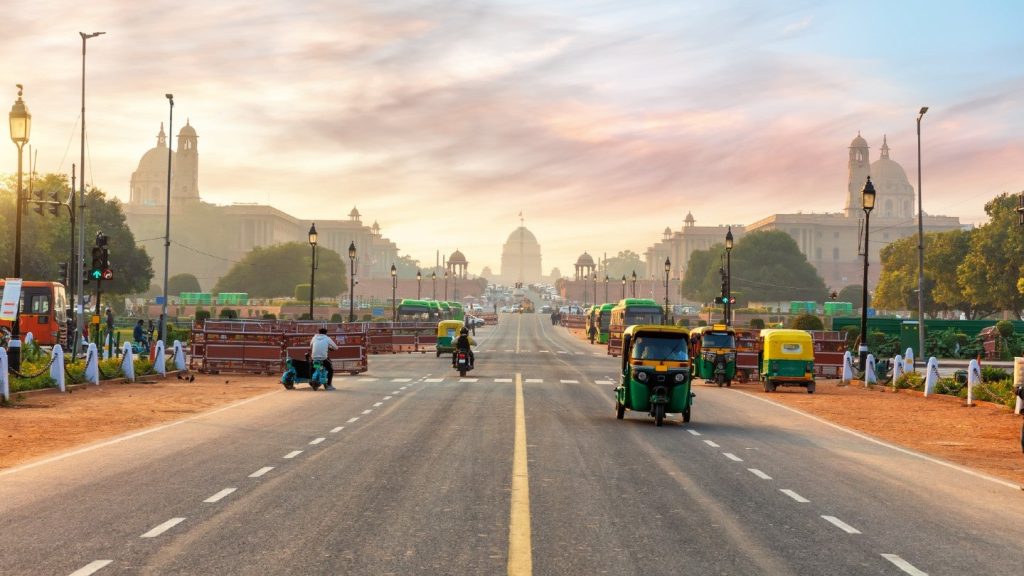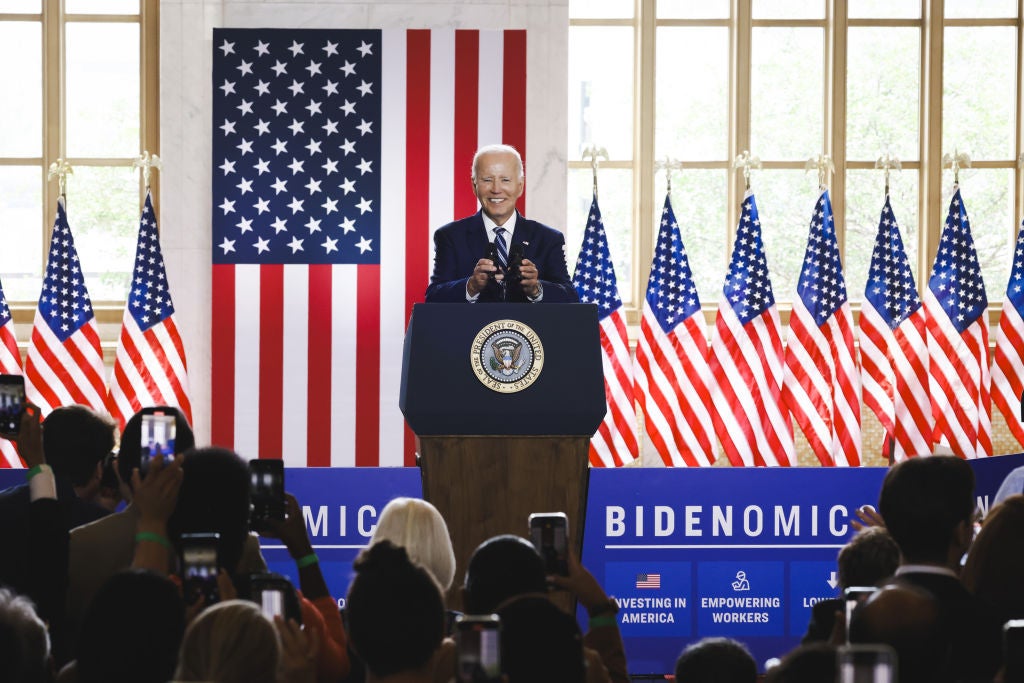
In 1952, the Milanese architect Ernesto Nathan Rogers uttered the famous phrase dal cucchiaio alla città, which means "from the spoon to the town". In the fertile years of post-war reconstruction, the saying became a keynote of Italian design.
Dreaming up cutlery in the morning and urban infrastructure in the afternoon, the architect was expected to take a preternaturally broad-ranging approach. For Rogers’ successors, 60 years later, the motto still applies. "We work from the smallest to the biggest possible scale," says Tyrolean architect Matteo Thun, "and this scale-jumping keeps our lives from being boring; every day is a new day."
This holistic approach to design is one that has stood Thun in good stead. His practice, founded in Milan in 1984, has tackled a striking range of commissions, taking wristwatches and golf courses in its stride. With product and lighting designers, interiors specialists and architects on the team, the strategy is to sit together and pool their strengths.
The Memphis Group
Thun was a founding member of the Memphis Group, the 1980s postmodernist design movement that eschewed rationalist ‘tastefulness’ in favour of a playful sense of kitsch. These days, however, he is just as well reputed for his growing back catalogue of hotels. Hospitality provides a perfect outlet for the ‘spoon to the town’ philosophy, relying as it does on both the small touches and the large-scale apportioning of space.
During his career, he has received numerous accolades, thrice winning the ADI Compasso d’Oro Award for design excellence, and last year securing the Simon Taylor Award for Lifetime Achievement. Moreover, three of his hotels have been selected for prestigious hospitality design awards. The latest project to cause a buzz is the renovated lobby in the Hilton Barcelona. First opened in time for the 1992 Olympics, the hotel was closed for six months while its public areas, suites and guestrooms were redesigned. It finally reopened in May, with a lobby expressly intended to capture the spirit of the city.
See Also:
"Barcelona is all about strong light, in summer and winter, and taking pleasure from life," says Thun. "There’s a very optimistic feeling in this town. They are leaders in nightlife, having dinner at midnight and happy hour between 7pm and 9pm. We placed a huge golden bar in the middle of the entrance; the idea is to bring in social life from the outside without disturbing the guests."
How well do you really know your competitors?
Access the most comprehensive Company Profiles on the market, powered by GlobalData. Save hours of research. Gain competitive edge.

Thank you!
Your download email will arrive shortly
Not ready to buy yet? Download a free sample
We are confident about the unique quality of our Company Profiles. However, we want you to make the most beneficial decision for your business, so we offer a free sample that you can download by submitting the below form
By GlobalDataSleek, white and almost spa-like in its serenity, the lobby and bar area is highly adaptable. The space can be rearranged to suit business meetings and events, with flexible partitions in the form of sheer drapes, and room on the walls for art.
Above all, the eye is drawn to a permanent installation, a tumbling orange chandelier cascading from the ceiling above the bar. Created by Thun’s friend Jacopo Foggini, the chandelier is crafted from lightweight acrylic and measures a staggering 15m from top to bottom. "It gives you a ‘wow’ of happiness," says Thun.
Reinterpreting Barcelona’s architectural legacy
Thun’s intention throughout the lobby was to reinterpret the city’s architectural legacy. While not directly influenced by Gaudí, the Catalan architect behind the Sagrada Familia and Parc Güell, he was keen to acknowledge this famous heritage.
"We achieved details, finishes and surface qualities because of our knowledge of Gaudí’s craftsmanship," he says. "Gaudí was perhaps the beginning of the holistic approach to architecture because he would design the building, the chair, the lamps, the door handles…
Using this craftsmanship when it came to Hilton was a fantastic opportunity to pay homage to the culture of the town."
Across all of his projects, Thun sees architecture as a question of conveying the "soul of the place". Perhaps most illustratively, the Vigilius Mountain Resort in South Tyrol, which opened in 2003, was intended to fit seamlessly into the surrounding Italian Alps. Accessible only by cable car or on foot, the building traverses the contours of the mountain, referencing local methods of construction with wood and clay.
The Nhow Hotel Milan
At the other end of the spectrum, the Nhow Hotel Milan is an eclectic design hotel in the heart of the city’s fashion district. Responsible for the interiors, lighting, façade and graphic design, Thun’s team transformed this one-time factory into a prominent events and hospitality venue. In its current incarnation, it nods both towards street art and the building’s industrial roots.
Thun cannot name a favourite project – "it is always the next hotel," he remarks – but a whistle-stop tour of his work would have to include concept interior design for Missoni’s fashion hotels, the distinctive underground Klima Hotel and, most recently, Punta Skala, a new resort in Croatia designed in collaboration with other ‘starchitects’.
This is not to neglect the smaller elements – Thun recently showcased the Savoy collection for Zucchetti, an elegant and versatile range of bathroom pieces for upmarket venues. If architecture means designing the soul of the place, then product design surely entails designing the soul of the brand. Over the years he has created coffee cups for Illy, chandeliers for Swarovski, and table and floor lamps for Flos, as well as working as creative director for Swatch in the early 1990s.
The eco bello philosophy
While all such projects are highly individualised, Thun’s philosophy remains consistent throughout. "Our keywords are eco bello, meaning the combination of economy and ecology," he explains. "First of all, we emphasise the ecological side by respecting the parameters of energy and lifecycle management, and then we look at the beauty of economy. It does not make sense to have dreams about 15m-high chandeliers unless value for money is number one in what you do."
Therefore, the Klima Hotel, semi-submerged in the Italian hillside, uses economical and ecological methods of heating and cooling. The Vigilius resort makes use of local spring water and a wood chip insulation system. And the chandelier at Hilton Barcelona weighs just 400kg – far lighter than others of its height, which often require ceilings to be reinforced.
This emphasis on materiality and sustainability may seem at odds with the conceptual approach espoused by the Memphis Group – Ettore Sottsass and his protégés were more interested in playing with signifiers than saving energy – but, as Thun sees it, the differences are only superficial. He has always been interested in pushing boundaries, in whichever domain they lie.
Less is more
Today’s eco bello architecture finds its apotheosis in the form of simple, artful designs, with nothing in place that does not need to be. While it is always easy to install additional items of furniture, knowing when to stop and what to remove is a harder ask. "Less is not a bore," opines Thun, "less is more."
The real question to ask is not how Thun has modified his approach over the years, but how he reconciles his uncompromising ethos with operators’ demands. How did he match the Barcelona lobby to Hilton’s highly specific hotel lobby design DNA?
Luckily, there was little conflict, Thun being more than happy to synthesise his own design expertise with the operational nous of a hotel brand.
"I think it’s fantastic to collaborate with US-based chains because, with stand-alone projects, it’s very difficult to know if the service works," he remarks. "We enjoy working with brands like Hilton."
As he sets to work on further hotel projects, his vast experience should lend itself to still more multifaceted designs. At the moment, the commission that excites him most is an island construction in Venice: "We’ve had the opportunity to rebuild the whole island and convey the spirit of the laguna," he enthuses.
Time will tell what the guests will make of this latest venue’s spoons.






